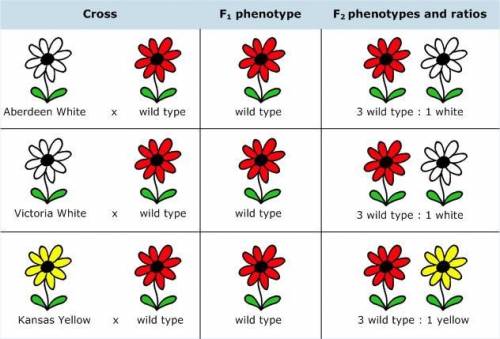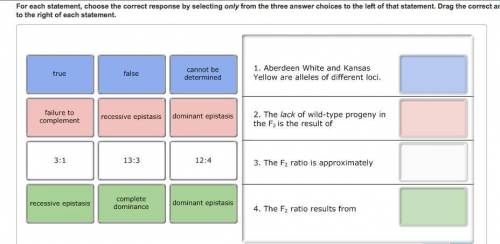
Biology, 26.02.2020 03:58, antonio9768
You study color variants of Arabidopsis hypotheticus, a plant with red flowers. You have obtained three pure-breeding mutant lines, all named for their place of origin. Two lines have white flowers (Aberdeen White and Victoria White), and one has yellow flowers (Kansas Yellow).
You begin your analysis by crossing each line with wild-type plants and selfing the F1 to produce an F2 generation.[Crosses between Aberdeen White and wild type, Victoria White and wild type, and Kansas Yellow and wild type] From these crosses you conclude that the mutations in all three lines are recessive to the wild type.
Crossing lines with the same recessive phenotype
You continue your analysis by crossing the Aberdeen White and Victoria White lines. This time you count the actual numbers of progeny in the two F2 phenotypic classes.
[Cross between Aberdeen White and Victoria White]
You also self several wild-type plants from the F2 and determine that some of them are pure-breeding. What can you conclude from these results?

Answers: 1
Other questions on the subject: Biology

Biology, 22.06.2019 01:30, chayaharroch03
Based on the law of dominance, we would expect percent of the offspring from this cross to have large teeth.
Answers: 2


Do you know the correct answer?
You study color variants of Arabidopsis hypotheticus, a plant with red flowers. You have obtained th...
Questions in other subjects:


History, 20.08.2019 06:30

Mathematics, 20.08.2019 06:30

History, 20.08.2019 06:30

History, 20.08.2019 06:30

History, 20.08.2019 06:30

Mathematics, 20.08.2019 06:30



Biology, 20.08.2019 06:30










